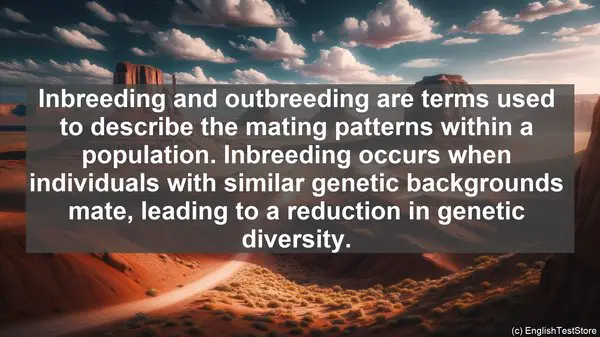Introduction
Today, we are going to dive into the fascinating world of forest genetics. While this field offers a wealth of knowledge, it also presents some challenges, especially when it comes to certain words. In this lesson, we will explore the top 10 commonly confused words in forest genetics, ensuring that you have a solid grasp on their meanings and applications. So, let’s get started!
1. Genotype vs. Phenotype
One of the fundamental distinctions in forest genetics is between genotype and phenotype. Genotype refers to the genetic makeup of an organism, the combination of genes it carries. On the other hand, phenotype encompasses the observable traits or characteristics of an organism, which are influenced by both its genotype and the environment. While genotype is like the blueprint, phenotype is the actual building. Understanding this distinction is crucial in studying how genetic variations manifest in forest ecosystems.
2. Dominant vs. Recessive
When we talk about genetic traits, we often encounter the terms dominant and recessive. A dominant trait is one that is expressed or visible in an organism, even if it is present in only one copy of the gene pair. In contrast, a recessive trait is only expressed if it is present in both copies of the gene pair. Think of it as a game of hide and seek, where the dominant trait always wins. This concept is vital in understanding how certain traits are inherited and passed on in forest populations.

3. Hybridization vs. Crossbreeding
Hybridization and crossbreeding are two methods used to introduce genetic diversity in forest populations. Hybridization involves the mating of individuals from different species, resulting in offspring with a mixed genetic makeup. Crossbreeding, on the other hand, refers to the mating of individuals from the same species but with different genetic traits. Both methods have their advantages and are employed in various forest management strategies.
4. Inbreeding vs. Outbreeding
Inbreeding and outbreeding are terms used to describe the mating patterns within a population. Inbreeding occurs when individuals with similar genetic backgrounds mate, leading to a reduction in genetic diversity. Outbreeding, on the other hand, involves mating between individuals with different genetic backgrounds, promoting genetic variation. Balancing these two strategies is crucial in maintaining a healthy and resilient forest population.
5. Gene Flow vs. Genetic Drift
Gene flow and genetic drift are two processes that influence the genetic composition of a population. Gene flow occurs when genes are exchanged between populations through migration or pollen dispersal, leading to increased genetic diversity. On the other hand, genetic drift refers to the random changes in gene frequencies within a population, often due to chance events. Both processes play significant roles in shaping the genetic makeup of forest populations over time.
6. Homozygous vs. Heterozygous
Homozygous and heterozygous are terms used to describe the genetic makeup of an individual for a particular trait. Homozygous individuals have two identical copies of a gene, either both dominant or both recessive. Heterozygous individuals, on the other hand, have two different copies of a gene, one dominant and one recessive. This distinction is crucial in understanding how traits are inherited and passed on in forest populations.
7. Polyploidy vs. Aneuploidy
Polyploidy and aneuploidy are two types of chromosomal abnormalities. Polyploidy occurs when an organism has more than two complete sets of chromosomes, often resulting in increased vigor and adaptability. Aneuploidy, on the other hand, refers to the presence of an abnormal number of chromosomes, which can lead to developmental issues. Understanding these concepts is essential in studying the genetic variations and adaptations in forest species.
8. Cloning vs. Propagation
Cloning and propagation are two methods used to reproduce plants in forest genetics. Cloning involves the production of genetically identical copies of a plant through various techniques, such as tissue culture. Propagation, on the other hand, refers to the natural or artificial methods used to reproduce plants, including seed germination and grafting. Both methods have their applications and are employed in different forest management scenarios.
9. Genetic Marker vs. Genetic Trait
Genetic markers and genetic traits are two concepts often encountered in forest genetics research. A genetic marker is a specific DNA sequence that is associated with a particular trait or characteristic. It serves as a signpost, helping researchers identify and study the presence or absence of certain traits in a population. A genetic trait, on the other hand, refers to a specific observable characteristic, such as tree height or wood density, that is influenced by genetic factors.

10. Gene Expression vs. Gene Regulation
Gene expression and gene regulation are two processes that govern how genes function. Gene expression refers to the process by which the information encoded in a gene is used to create a functional product, such as a protein. Gene regulation, on the other hand, involves the various mechanisms that control when and to what extent a gene is expressed. Understanding these processes is crucial in unraveling the complex interactions and functions of genes in forest ecosystems.
